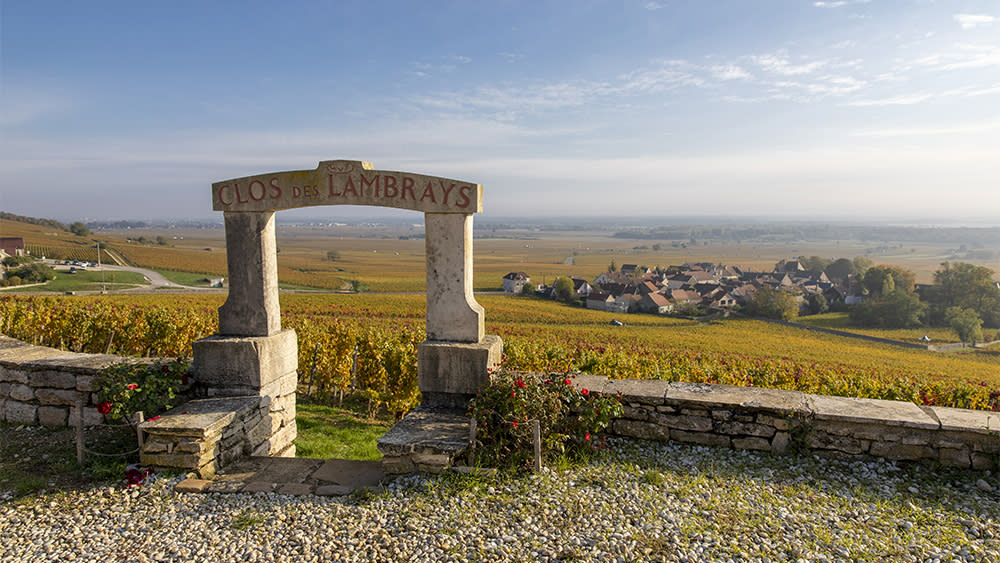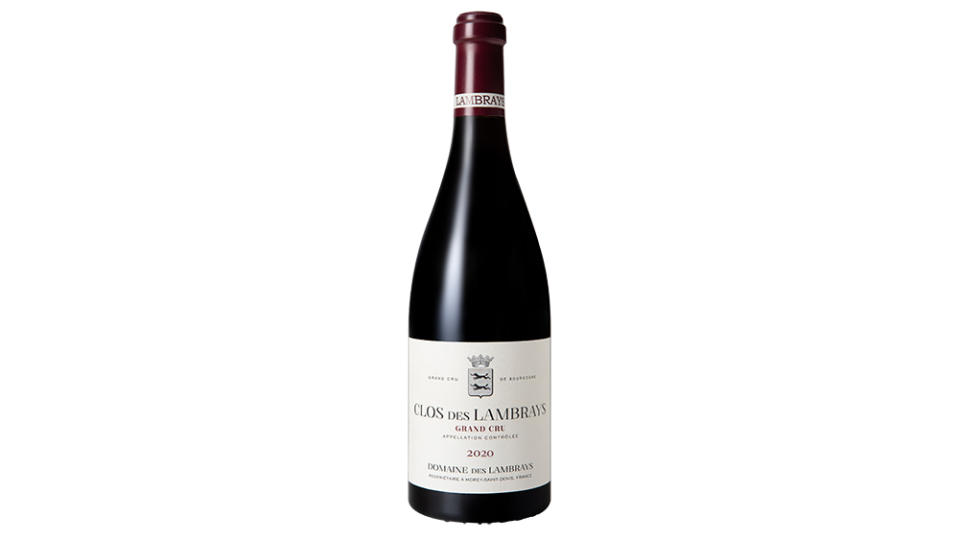Bernard Arnault Poached His Rival’s Winemaker, and a Stunning Burgundy Grand Cru Is the Result

- Oops!Something went wrong.Please try again later.
Long overshadowed by its more famous neighbors to the north and south, Gevrey-Chambertin and Chambolle-Musigny, respectively, Morey-Saint-Denis was discreetly turning out exceptional red Burgundy before the thirst for Pinot Noir thrust the quaint village into the global spotlight. It’s home to the highest concentration of grand cru vines in the region, all located within five designated vineyards: Clos Saint-Denis, Clos de la Roche, Bonnes-Mares, Clos de Tart, and Clos des Lambrays.
The last is an undulating, 21.4-acre plot at the heart of Domaines des Lambrays. First enclosed by a stone fence built by Cistercian monks in the 14th century, the walled vineyard (the very definition of a clos) was split among 74 owners during the French Revolution. Reassembled at the end of the 19th century by the Rodier family, it was purchased by LVMH in 2014 and recently made part of Bernard Arnault’s Vins d’Exception collection, a small group of wineries that will remain under direct family leadership. Winemaker Jacques Devauges was poached from neighbor Clos de Tart, owned by Arnault’s rival on the luxury playing field, François Pinault.
More from Robb Report
Who Needs the Roys? Bernard Arnault and His Children Are Talking Succession at LVMH
Nearly 3 Million Bottles Worth of Red Wine Flooded This Small Portuguese Town
Robert Mondavi Has Joined Forces With an Acclaimed Texas Chef for Its New Napa Tasting Room
Devauges did more than just move across the road when he joined Domaine des Lambrays. Under his management, the estate has been converted to organic and biodynamic practices, and a new gravity-fed, minimal intervention winery has been built. One of Devauges’s first initiatives was to divide the clos into 12 individual parcels that are vinified separately and then blended together to create Domaine des Lambrays Clos des Lambrays Grand Cru.
The vineyard itself is partitioned into 203 ouvrées, an old term that relates to the amount of land a vigneron can work in a day. (Only 202 are owned by Domaine des Lambrays, which, one can only assume, is a source of great consternation to M. Arnault.) Its terrain is wildly varied, with a difference of almost 200 feet from the lowest elevation to the highest. Devauges required that a custom tractor be built to work the vines, many of which run perpendicular to the slopes of the land. Inside the winery, he added specially designed cylindrical wooden fermentation tanks, which are “very interesting for the complexity and the terroir expression of the wines,” Devauges says.

The certified-organic vineyards are cultivated without the use of weed killers, pesticides, or what Devauges calls “chemical synthesis products,” while a biodynamic approach means that Devauges and team “farm according to the moon calendar.” Such practices, he says, “allow us to try to reach a balance between the soil, our vines, and their environment,” while the bioactivity of the soil “becomes much more effective, and the result is that the mineral part of the soil turns to be accessible to the vines through the roots.”
The outcome? “The grapes are tastier,” says Devauges. “Our wines have more substance and more precision. They have a better definition of their terroirs.”
But don’t just take his word for it, take ours. Domaine des Lambrays Clos des Lambrays Grand Cru 2020 has a gorgeous bouquet of red plum, vanilla, and rose petal. A graceful floral note transitions to the palate alongside black-cherry, Mission-fig, and butterscotch flavors that come wrapped in polished tannins and coalesce in an elegant, cocoa-dusted finish. Don’t pass this one by—and be on the lookout for its four siblings: village appellation Morey-Saint-Denis, Morey-Saint-Denis Premier Cru Les Loups, and two premier cru whites from Puligny-Montrachet.
Best of Robb Report
Why a Heritage Turkey Is the Best Thanksgiving Bird—and How to Get One
The 10 Best Wines to Pair With Steak, From Cabernet to Malbec
Sign up for Robb Report's Newsletter. For the latest news, follow us on Facebook, Twitter, and Instagram.

